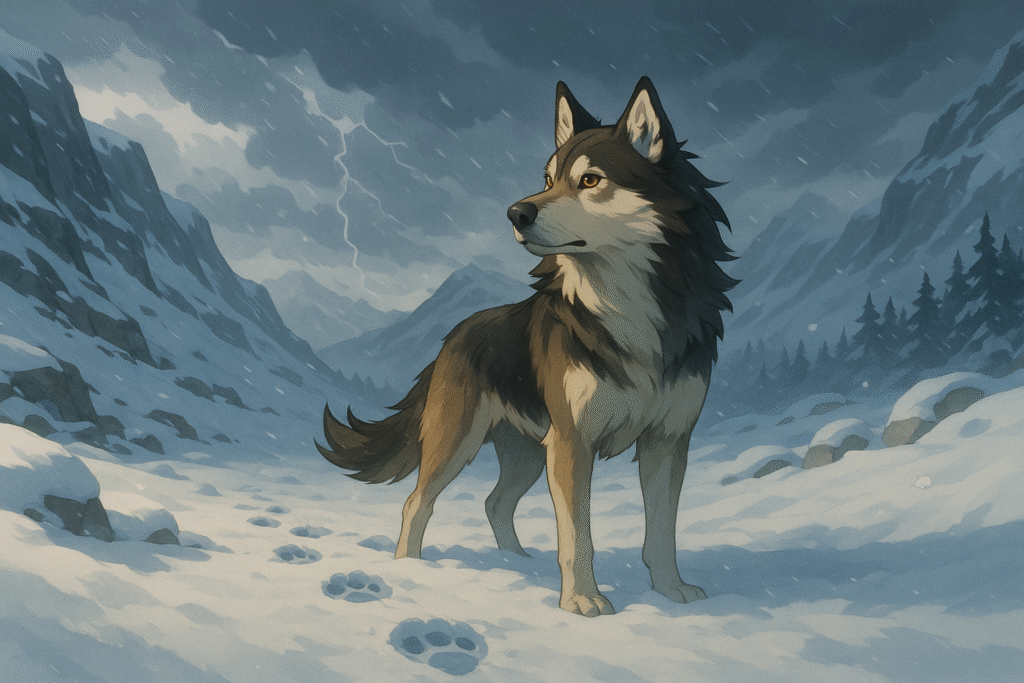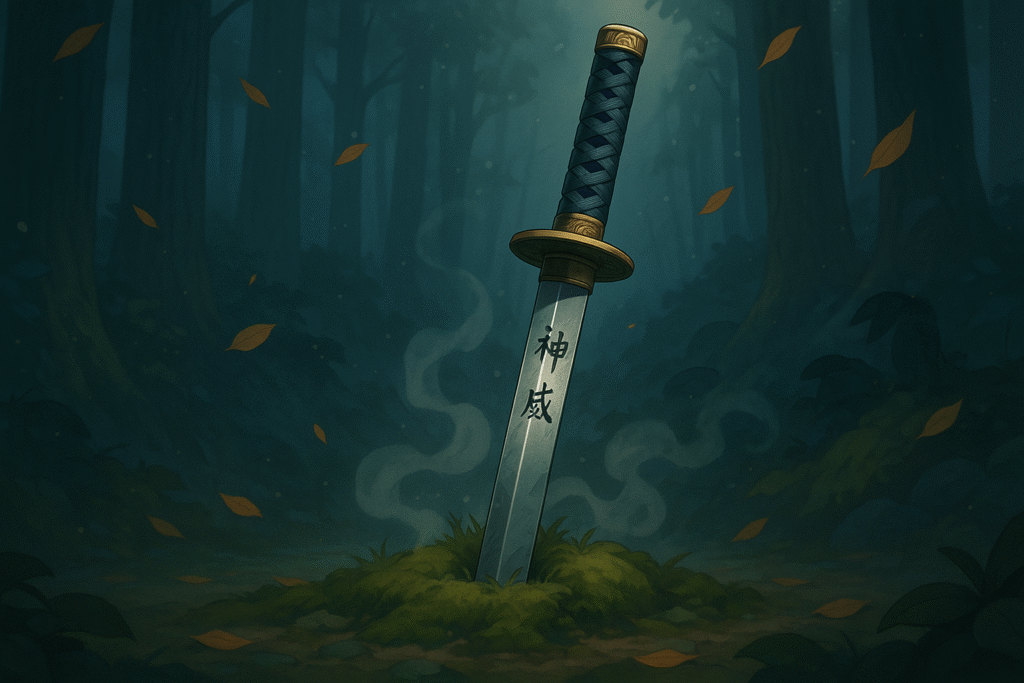When winter blankets the mountains of northern Japan with snow, a powerful figure emerges—the Akita, Japan’s premier bear hunting dog. With its imposing stature, unwavering loyalty, and remarkable hunting abilities, this ancient breed has earned its place as a national treasure. Originally bred in the snowy, mountainous Akita Prefecture, these magnificent canines were specially developed to track and hunt formidable prey, including the massive Japanese brown bear.
Today, we’ll explore the fascinating history, characteristics, and cultural significance of the Akita—Japan’s legendary bear hunting dog that combines the heart of a samurai with the devotion of a loyal companion.
The Ancient Origins of Japan’s Bear Hunting Dog
The Akita’s story begins in the rugged, snow-covered regions of northern Japan, where they were originally known as “snow country dogs.” Their development wasn’t by chance but rather a deliberate breeding process to create the perfect hunting companion capable of tracking and confronting dangerous game in harsh environments.
These powerful dogs were specifically bred to assist hunters in tracking and hunting large prey, including the Japanese brown bear, wild boar, and deer. Their hunting technique was remarkable—Akitas would typically hunt bears in male-female pairs, with specific tactical roles for each. The male would distract the bear, drawing its attention, while the female would circle behind to bite at the bear’s legs and hinder its movement until the hunter could arrive for the kill.
This specialized hunting strategy showcases the intelligence and teamwork embedded in the breed’s instincts, making them exceptionally effective bear hunting dogs even against prey that outweighed them significantly.
Physical Traits of the Japanese Bear Hunting Dog
To understand what makes the Akita such an effective bear hunting dog, we must examine its physical characteristics:
- Powerful Build: Akitas possess a muscular, robust frame designed for both strength and endurance
- Double Coat: Their thick, insulating double coat protects against the harsh Japanese winter
- Webbed Toes: A unique adaptation that helps them walk effectively on snow
- Broad Head: Features a strong jaw with impressive bite force
- Alert Ears: Permanently erect ears that can detect subtle sounds in dense forest
- Keen Senses: Exceptional smell and hearing capabilities perfect for tracking
These physical attributes combine to create a canine exceptionally well-suited to hunting in challenging mountain terrain and confronting dangerous prey many times their size.
The Samurai Connection: Dogs with Warriors’ Souls
The connection between Akitas and Japan’s warrior class runs deep. As these bear hunting dogs proved their worth in the field, they gained the attention and admiration of the samurai class. By the 1700s, as both famine and theft increased across Japan, Akitas became highly prized as protective guardians.
Their popularity grew to such an extent that ownership was eventually restricted to samurai and nobility. This connection between warrior and canine ran so deep that Japanese folklore suggested a fascinating spiritual bond—it was believed that if a samurai died dishonorably, his soul might be reborn into an Akita’s body. This second chance would allow the warrior to regain his honor by dying while protecting his master.
This spiritual dimension reflects the profound respect Japanese culture held for the Akita’s courage, loyalty, and protective nature—qualities that mirrored the samurai code itself.
Hachiko: The Akita That Captured the World’s Heart
No discussion of the Akita would be complete without mentioning Hachiko, perhaps the most famous Japanese bear hunting dog in history. Though Hachiko never hunted bears himself, his story demonstrates the unwavering loyalty inherent to the breed.
In 1920s Tokyo, Hachiko would accompany his owner, Professor Ueno, to the train station each day and return in the afternoon to greet him. When the professor unexpectedly passed away at work one day, Hachiko continued to wait faithfully at the station every day for nine years, hoping for his master’s return.
This extraordinary demonstration of loyalty resonated deeply with the Japanese people, who would feed and care for the faithful dog. Eventually, Hachiko’s story spread globally, inspiring books, films (including “Hachi: A Dog’s Tale” starring Richard Gere), and even attracting the attention of Helen Keller, who would later play a crucial role in bringing the breed to America.
Today, a statue of Hachiko stands outside Tokyo’s Shibuya Station, serving as a permanent reminder of the Akita’s legendary loyalty.
Want to explore Japan’s culture?
Discover Japan’s rich culture, traditions, and hidden gems with our expertly crafted guides. Get insider tips on travel, food, and history. All for free!
From Japan to the World: The Akita’s Journey to America
The Akita’s introduction to the United States came through an unexpected source—Helen Keller. During her 1937 visit to Japan, Keller learned about Hachiko’s story and was deeply moved. The Japanese government presented her with an Akita puppy named Kamikaze-Go as a gift, making him the first Akita to reach American shores.
Keller described her new companion as “gentle, companionable, and trusty,” referring to him affectionately as an “angel in fur.” Tragically, Kamikaze-Go died from distemper after only seven and a half months. Upon hearing of Keller’s loss, the Japanese government sent Kamikaze’s brother, Kenzan-Go, who became the second Akita in America.
These two dogs would become the foundation for the breed’s development in the United States, though American and Japanese breeding programs would eventually diverge, creating slight differences between Japanese and American Akita lines.
Modern Role: From Bear Hunter to Beloved Companion
While Akitas were originally bred as Japanese bear hunting dogs, their role has evolved significantly in modern times. In remote areas of Japan, some Akitas still participate in hunting traditions, but most have transitioned to roles as family companions and guardians.
Their natural protective instincts make them excellent watchdogs, while their loyalty and affection toward family members make them devoted pets. However, their hunting heritage remains evident in certain behavioral traits:
- Strong prey drive
- Independence and sometimes stubbornness
- Protective nature toward family
- Reserved attitude toward strangers
- Potential aggression toward other animals
These characteristics require owners to provide proper training and socialization from an early age. With the right guidance, an Akita can be a wonderful family companion while still honoring its noble hunting heritage.
If you’re fascinated by Japanese culture and language, you might enjoy exploring our Learn Japanese page, where you can access free guides to help you connect more deeply with Japan’s rich cultural traditions like those surrounding the Akita.
Cultural Significance in Modern Japan
The Akita remains deeply embedded in Japanese culture as a symbol of good health, happiness, and protection. When a child is born in Japan, the family often receives a small Akita statue, symbolizing health and long life. Similarly, when someone falls ill, friends might gift an Akita figure to wish them a speedy recovery.
In 1931, the Japanese government officially designated the Akita as a national monument and natural treasure, cementing its status as a living symbol of Japanese heritage. This designation helped protect the breed during World War II when many dogs were killed for their fur or as food sources.
For those interested in Japanese folklore and mythology, the tale of Raitaro, Japan’s mystical child of the storm, offers another fascinating glimpse into Japan’s rich cultural landscape, similar to how the Akita represents an important living cultural symbol.
Caring for a Japanese Bear Hunting Dog Today
If you’re considering adding an Akita to your family, understanding their unique needs is essential:
- Exercise: Despite their hunting background, Akitas need moderate exercise rather than extreme activity
- Training: Early, consistent training with positive reinforcement is crucial
- Grooming: Their thick double coat requires regular brushing, especially during seasonal shedding
- Socialization: Early exposure to different people, animals, and environments helps temper their natural reserve
- Climate consideration: Their snow-country heritage means they thrive in cooler climates but may struggle in extreme heat
These magnificent dogs aren’t for everyone—they require experienced owners who understand and respect their independent nature while providing firm, consistent guidance.
Conclusion: Honoring the Legacy of Japan’s Bear Hunting Dog
The Akita stands as a living testament to Japan’s rich cultural heritage and the ancient partnership between humans and canines. From their origins as specialized bear hunting dogs in the snowy mountains of northern Japan to their status as beloved companions worldwide, Akitas continue to captivate us with their striking appearance, unwavering loyalty, and noble spirit.
Whether protecting their families, commemorating cultural traditions, or simply providing companionship, these magnificent dogs carry within them the spirit of the samurai and the heart of the mountains that shaped them. The Japanese bear hunting dog remains one of the world’s most fascinating breeds—a living connection to an ancient way of life and a reminder of the extraordinary bond between humans and their four-legged companions.
Q&A: Japanese Bear Hunting Dogs
What breed of dog was used to hunt bears in Japan?
The Akita was specifically bred to hunt bears in Japan. These powerful dogs worked in male-female pairs to track and help hunters take down Japanese brown bears, demonstrating remarkable courage and tactical skill.
Are Akitas still used for bear hunting today?
While some Akitas in rural Japanese areas may still participate in hunting traditions, most Akitas today serve as family companions and guard dogs rather than active bear hunters.
What makes Akitas good bear hunting dogs?
Akitas’ powerful build, thick protective coat, keen senses, and incredible loyalty make them excellent bear hunting dogs. Their hunting technique involved distracting and immobilizing bears until hunters could make the kill.
How did Akitas hunt bears traditionally?
Akitas hunted bears in male-female pairs, with the male distracting the bear while the female circled behind to bite at the bear’s legs, slowing it down until the hunter could arrive for the final shot.
What other animals did Akitas hunt besides bears?
Besides bears, Japanese hunters used Akitas to hunt wild boar, deer, and waterfowl, showcasing their versatility as hunting companions across different types of game.
Love Japan? Stay in the Loop!
Get the best of Japan straight to your inbox: language, culture & travel insights!




